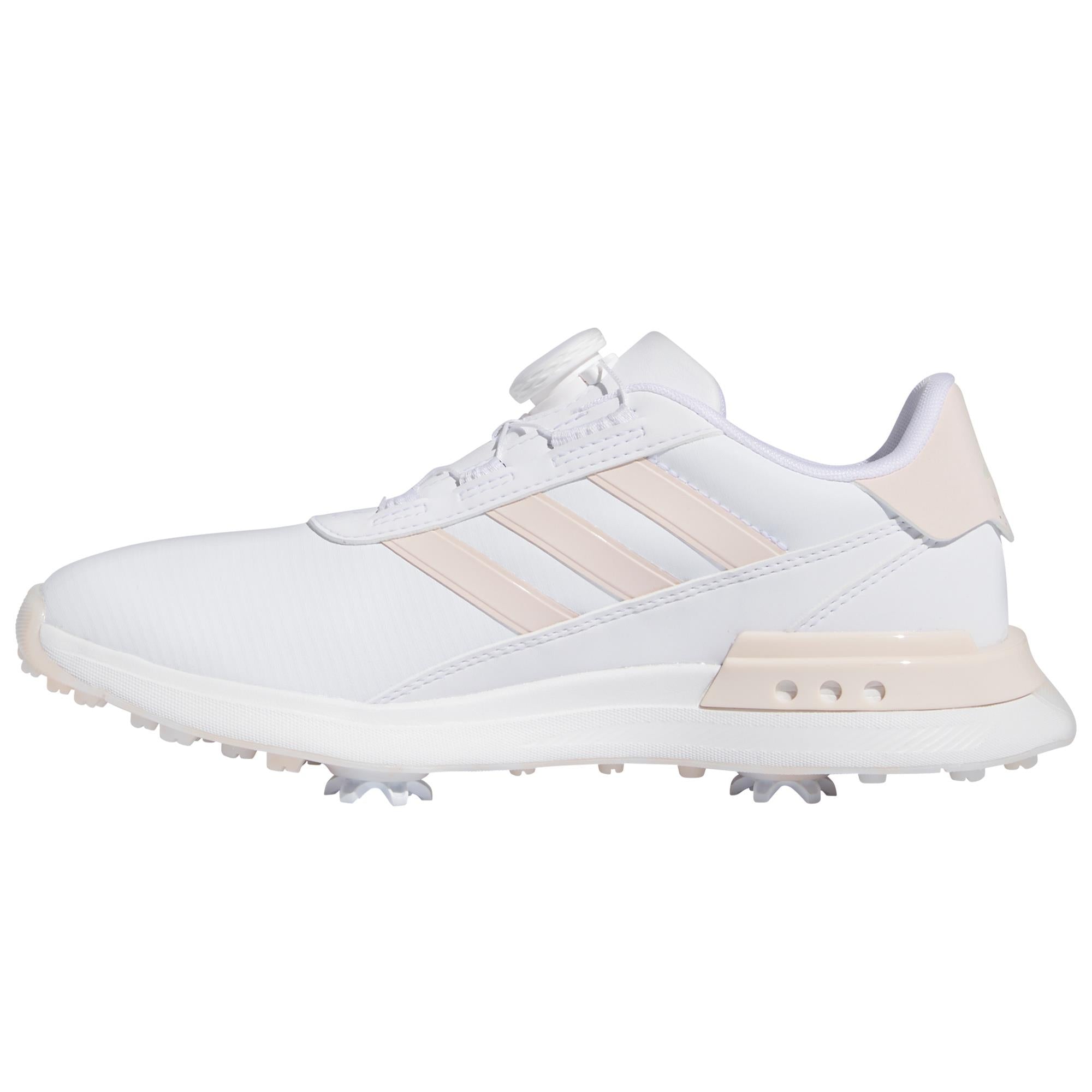Golf shoes cannot be used for football. They lack the necessary traction and support required for football gameplay.
Football demands footwear that ensures agility, traction, and protection. Golf shoes, designed for stability on grassy courses, do not meet these requirements. Football shoes have studs or cleats that provide grip on different playing surfaces. They also offer ankle support and cushioning to withstand physical contact.
Using golf shoes for football can increase the risk of injury and hinder performance. Choosing the right footwear for each sport is crucial for safety and effectiveness. Therefore, always use football-specific shoes for optimal performance and protection on the field.
Design Differences
Understanding the design differences between golf shoes and football shoes is crucial. Each type of shoe is tailored for a specific sport. Their design elements ensure optimal performance on the field or course.
Material Composition
Golf shoes often use leather or synthetic materials. These materials provide comfort and durability. Football shoes use stronger, more flexible materials like kangaroo leather or synthetic fibers. This helps withstand the rough conditions on the football field.
| Shoe Type | Primary Materials |
|---|---|
| Golf Shoes | Leather, Synthetic |
| Football Shoes | Kangaroo Leather, Synthetic Fibers |
Weight And Flexibility
Weight and flexibility play key roles in shoe performance. Golf shoes are generally heavier. This weight provides stability during swings. Football shoes are lighter and more flexible. This allows for quick movements and changes in direction.
Here is a quick comparison:
- Golf Shoes: Heavier, less flexible
- Football Shoes: Lighter, more flexible
These differences show why each shoe is unique. Each design serves its specific sport well.

Credit: www.amazon.com
Traction And Grip
Traction and grip are crucial in both golf and football. Each sport demands specific footwear for optimal performance. In this section, we will explore the differences in traction and grip between golf shoes and football shoes.
Golf Shoes Traction
Golf shoes are designed to provide excellent traction on grassy surfaces. They often feature spikes or cleats that dig into the turf. This helps golfers maintain stability during swings. Here’s a table to show the key features:
| Feature | Golf Shoes |
|---|---|
| Spikes | Metal or soft plastic |
| Surface | Grass |
| Flexibility | Moderate |
These spikes provide grip on wet and dry courses. Golf shoes are also designed for comfort during long walks. This makes them less suitable for sports requiring quick movements.
Football Shoes Grip
Football shoes, on the other hand, are built for speed and agility. They have specialized cleats for different playing surfaces. Here’s a breakdown:
| Feature | Football Shoes |
|---|---|
| Cleats | Rubber or plastic |
| Surface | Grass, turf, or artificial |
| Flexibility | High |
Football cleats are shorter and more numerous. They provide better traction during quick sprints and sudden stops. Football shoes also offer more ankle support. This minimizes the risk of injury during high-impact play.
In summary, golf shoes and football shoes have different designs to meet the demands of their respective sports. While both provide traction and grip, their specific features make them unsuitable for interchangeability.
Support And Comfort
When considering using golf shoes for football, support and comfort are crucial. Let’s dive into the specifics of arch and ankle support as well as cushioning and padding.
Arch And Ankle Support
Golf shoes provide excellent arch support. This is important for walking long distances on the course. Football also requires good arch support for running and quick movements. The ankle support in golf shoes is typically sturdy. This helps prevent injuries during play. Yet, football often involves more intense lateral movements. So, the ankle support must be even stronger.
Cushioning And Padding
Golf shoes usually come with ample cushioning and padding. This provides comfort during long walks. The cushioning helps absorb shock, making it easier on your feet. Football involves a lot of running and sudden stops. Extra padding can reduce foot fatigue. But, football shoes are designed for different types of impact. The padding in football shoes is tailored for more dynamic movements.
| Feature | Golf Shoes | Football Shoes |
|---|---|---|
| Arch Support | Good | Excellent |
| Ankle Support | Sturdy | Very Strong |
| Cushioning | Adequate | Specialized |
| Padding | Comfortable | Enhanced |
In summary, golf shoes offer good support and comfort. Yet, football shoes are designed for more rigorous activity. Choose the right shoe for your sport to avoid injury and enhance performance.

Credit: ladiesonlinegolf.com
Durability
When considering using golf shoes for football, understanding their durability is crucial. Golf shoes and football shoes face different stress levels. Let’s dive into the durability aspects of golf shoes in the context of football.
Wear And Tear
Golf shoes are designed for the golf course. They endure the wear and tear from walking on grass and soft surfaces. Football, on the other hand, involves more aggressive movements. This includes running, sudden stops, and sharp turns. Golf shoes might not handle these actions well. Their soles and materials could wear out faster.
Longevity In Different Surfaces
Golf shoes excel on grassy and soft surfaces. They provide traction and comfort on golf courses. Football is played on various surfaces like grass, turf, and even mud. The studs on golf shoes are not made for these conditions. This could reduce the shoes’ lifespan when used for football.
| Surface | Golf Shoes | Football Shoes |
|---|---|---|
| Grass | Good | Excellent |
| Turf | Poor | Good |
| Mud | Poor | Good |
To summarize, using golf shoes for football may not be the best choice. They might not withstand the rigorous activities and varied surfaces in football. Consider investing in the right pair of football shoes for better performance and durability.
Performance Impact
Using golf shoes for football can impact your performance. This section explores how golf shoes affect speed, agility, stability, and balance on the football field.
Speed And Agility
Speed and agility are crucial in football. Golf shoes may hinder these abilities. Football shoes are designed for quick changes in direction. They have studs or cleats that provide better grip on grass. Golf shoes may not offer the same traction. They are built for walking long distances, not for running sprints or evading opponents.
A player wearing golf shoes might slip more often. This can lead to slower reactions and less effective plays. Football shoes are tailored to boost speed and enhance agility on the field.
Stability And Balance
Stability and balance are vital in football. Football shoes are designed to support lateral movements. They help players maintain balance during tackles and jumps. Golf shoes focus on providing stability on uneven terrain. They have a different sole design that might not provide adequate support for football actions.
Football requires dynamic movements. The wrong shoes can increase the risk of injury. Proper football shoes ensure better stability and balance. This helps players perform at their best and stay safe on the field.
Safety Concerns
Using golf shoes for football raises many safety concerns. Football involves a lot of running, sudden stops, and physical contact. Golf shoes are not designed for this. They could lead to serious injuries.
Risk Of Injury
Golf shoes have spikes or cleats made for grass. These can be dangerous in football. The spikes can cause players to trip or fall. This increases the risk of ankle and knee injuries. The shoes do not have good ankle support. Football players need shoes that protect their ankles.
Football fields have different surfaces. They can be grass or artificial turf. Golf shoes are not suited for all these surfaces. The spikes can get caught. This can lead to sprains or other injuries.
Appropriate Usage
Golf shoes are made for one purpose: playing golf. They help golfers grip the grass. Football shoes, on the other hand, are designed for the high-impact nature of football. They provide better grip and protection. Football shoes have rubber or plastic studs. These are safer for running and tackling.
Football shoes also offer more cushioning. They absorb the shock from running and jumping. This helps to prevent foot and leg injuries. Football shoes have strong materials. They protect the feet from kicks and tackles.
| Feature | Golf Shoes | Football Shoes |
|---|---|---|
| Studs/Cleats | Metal or plastic spikes | Rubber or plastic studs |
| Ankle Support | Minimal | High |
| Cushioning | Low | High |
| Surface Compatibility | Grass only | Grass and turf |
In summary, using golf shoes for football is risky. Football shoes are specifically designed to handle the demands of the game. Always choose the right shoes for your sport. Your safety should come first.

Credit: austads.com
Frequently Asked Questions
Can You Use Golf Shoes For Football?
Golf shoes are not suitable for football. They lack the necessary grip and ankle support. Football requires specialized footwear for safety and performance.
What Is The Difference Between Golf And Football Shoes?
Golf shoes have spikes for turf grip, while football shoes have studs for traction. Football shoes also provide more ankle support.
Are Golf Shoes Good For Running?
Golf shoes are not ideal for running. They are designed for walking on grass and lack the cushioning needed for running.
Can Golf Shoes Be Worn Casually?
Yes, golf shoes can be worn casually. However, they might not be as comfortable as regular casual shoes for everyday wear.
Conclusion
Using golf shoes for football is not recommended. They lack the necessary support and traction. Football requires specialized footwear for safety and performance. Invest in proper football shoes to enhance your game and prevent injuries. Choose the right equipment for the best experience on the field.





